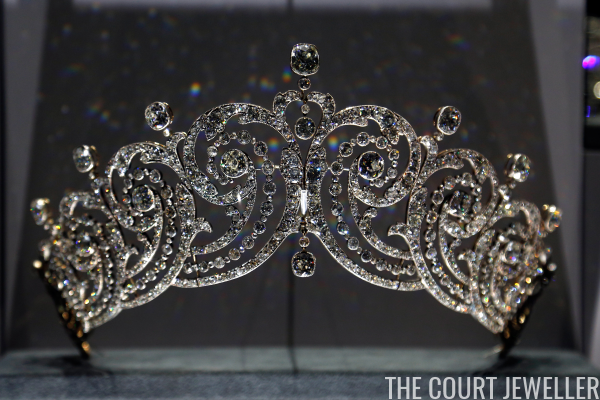 |
| FRANCOIS GUILLOT/AFP/Getty Images |
Jewel History: Diamonds Guarded Ingeniously (1888)
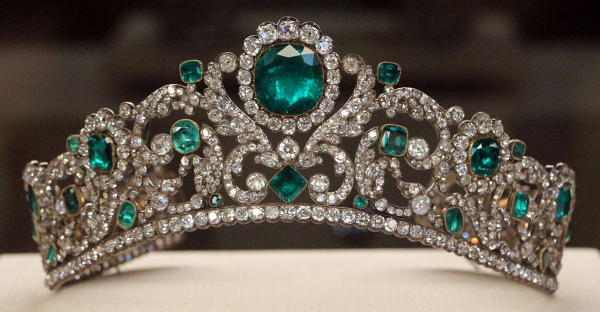 |
| The diamond and emerald tiara of the Duchess of Angouleme, on display with the French crown jewels in the Louvre’s Apollo Gallery (Wikimedia Commons) |
When the French crown jewels were sold by auction last season [1], it is well known that the finest and most historical of the gems, including the famous Regent Diamond [2], were reserved, and these may now be seen in the Louvre in the gallery called after the well-known statue of Apollo, which is such a prominent object in it [3].
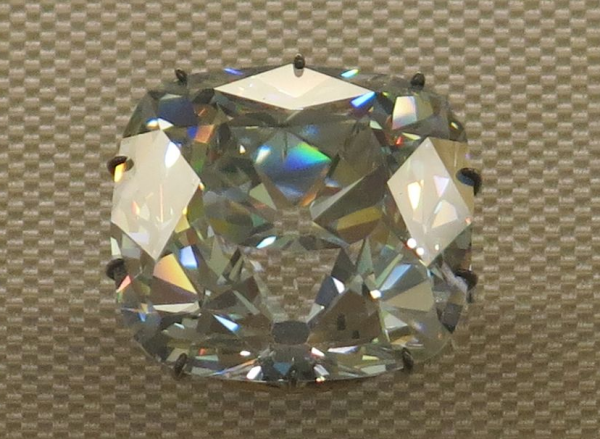 |
| The Regent Diamond, on display with the French crown jewels in the Louvre’s Apollo Gallery (Wikimedia Commons) |
Before these priceless gems were exposed, however, a committee of skilled officials and experts was appointed in order to decide on some plan for rendering their loss by theft virtually impossible.
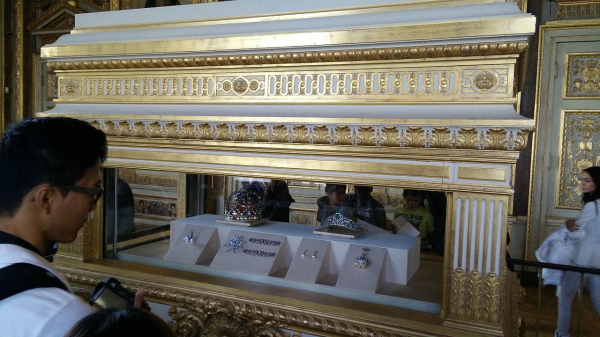 |
| The French crown jewels, on display in the Louvre’s Apollo Gallery (Wikimedia Commons) |
And this is what the committee decided upon. The jewels are exhibited in a showcase, the glass plates of which are exceptionally thick and the iron framework of which is abnormally strong, and an attendant has been appointed to keep watch over the precious exhibit all day long.
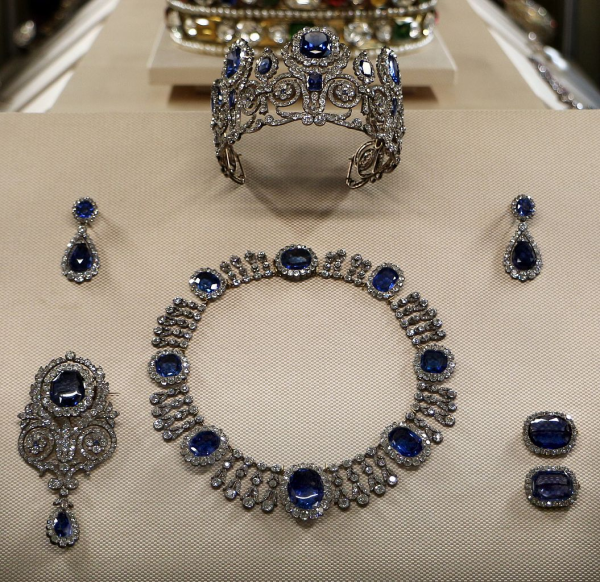 |
| Queen Marie Amelie’s diamond and sapphire parure, on display with the French crown jewels in the Louvre’s Apollo Gallery (Wikimedia Commons) |
Should he have the slightest cause to suspect any visitor or visitors he has only to touch a button easily within his reach, whereupon the glass case promptly disappears from view and sinks into a specially-constructed shaft, over the top of which the same automatic machinery causes thick covers, formed of their metal plates, to close with a snap.
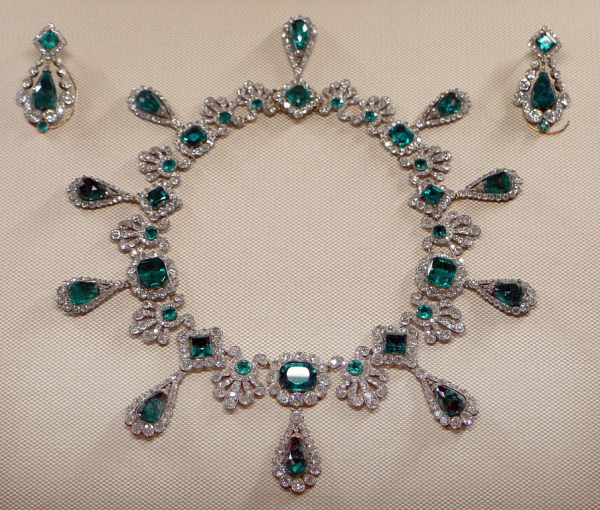 |
| Empress Marie Louise’s diamond and emerald earrings and necklace, on display with the French crown jewels in the Louvre’s Apollo Gallery (Wikimedia Commons) |
This ingenuity displayed in carrying out this plan is remarkable, and the fact that the clockwork apparatus has cost close upon £800 [4], will convey some idea of its complicated character.
NOTES
1. After the end of Napoleon III’s Second French Empire in 1870, France once again became a republic. Members of the National Assembly subsequently decided to auction the crown jewel collection, which consisted of the pieces that had survived the revolutions and wars of the eighteenth and nineteenth centuries. As this article notes, some pieces were retained for display in museums, including the Louvre. The rest of the jewels were sold in 1887.
2. The Regent Diamond is a 140.64 carat gemstone that has been a part of the French crown jewel collection since 1717. The diamond was found in India and later sold to the Duke of Orleans, who served as regent for King Louis XV. The stone was stolen during the 1789 revolution, but it was later recovered. Napoleon had the diamond set on his sword; later, it was worn in a diadem by Empress Eugenie. The diamond has been on display at the Louvre since 1887.
3. The Gallery of Apollo today is part of the Louvre Museum. It houses the display of the French crown jewel collection. When the palace was still a royal residence, the gallery was destroyed by fire in 1661 and subsequently rebuilt on orders from King Louis XIV.
4. It’s extremely difficult to estimate the equivalence between historical currency value and today’s money, but the most conservative estimate places the work for the gallery at around £90,000.
The Daily Diadem: Princess Francoise’s Turquoise Tiara
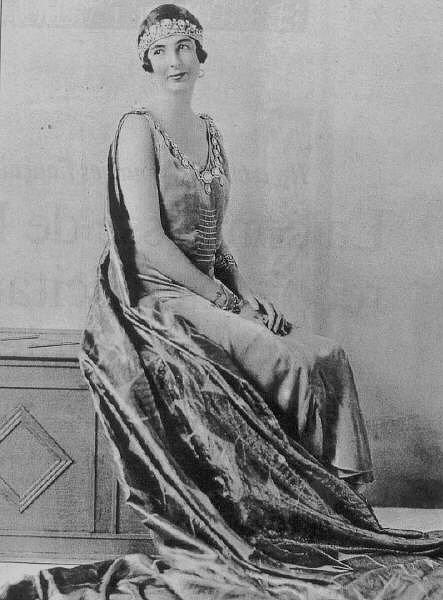 |
| Wikimedia Commons |
- « Previous Page
- 1
- …
- 44
- 45
- 46
- 47
- 48
- …
- 66
- Next Page »